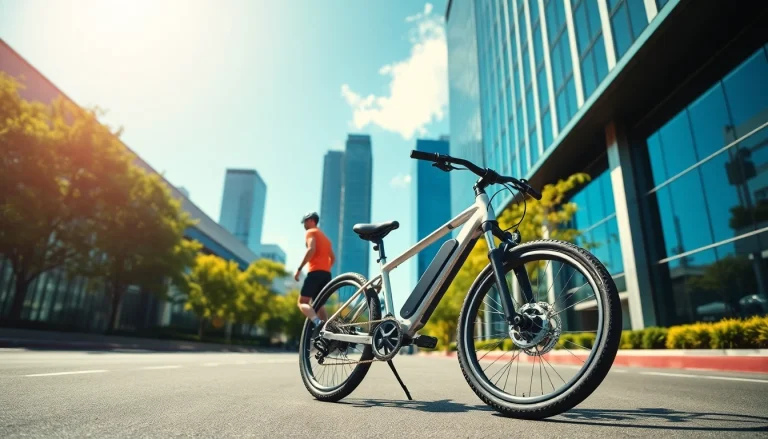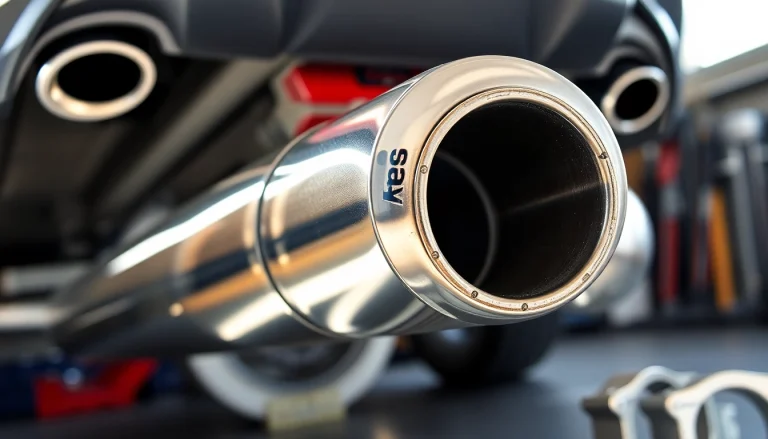What is Part Exchange?
Definition and Overview of Part Exchange
Part exchange is a transaction in which a customer trades in an existing item, such as a car, as part of the payment for a new item. This concept is especially prevalent in industries that involve high-value items, such as automotive and real estate. Instead of paying the full price in cash or financing, the customer uses the value of their traded item to offset the cost of the new purchase. This arrangement can streamline transactions and reduce the overall financial burden on the buyer. For more detailed insights, visit Part Exchange.
How Part Exchange Works in Automotive Transactions
The process of part exchange in the automotive context typically begins with the customer presenting their used vehicle to a dealership or car seller. The dealer assesses the car, considering its make, model, age, condition, and market demand to determine its value. Once a fair value is established, this amount is deducted from the cost of a new or used car that the customer intends to purchase. This simplifies the transaction by allowing the buyer to seamlessly trade their old vehicle while concurrently choosing a new one, often on the dealer’s lot.
Advantages of Choosing Part Exchange
Part exchange presents various advantages, making it an appealing option for many buyers. Firstly, it can save time by eliminating the need for separate advertising and private sales of the old vehicle. Secondly, part exchanging a car leads to fewer logistical challenges, as buyers do not have to coordinate viewings or deal with potential buyers directly. Furthermore, dealers often have a streamlined system for evaluating trade-ins, which can expedite the overall buying process for customers who wish to drive away in a new vehicle quickly. Additionally, a part exchange arrangement can lead to significant financial benefits by allowing for a reduction in the overall price of the new vehicle.
Benefits of Part Exchange for Car Buyers
Convenience and Time-Saving Aspects
One of the main attractions to the part exchange system is its inherent convenience. As a car buyer, part exchanging means that you can offload your old vehicle right at the dealership where you make your new car purchase. Instead of preparing your old vehicle for a private sale, which might include cleaning, repairs, and negotiations with unknown buyers, you can focus solely on selecting the new car you desire. This not only saves you time, but it also minimizes the stress associated with selling a vehicle privately.
Financial Benefits: Lower Down Payments
The financial aspect of part exchange cannot be understated. By trading in your old car, you reduce the cash needed for the new vehicle, which in many cases can significantly lower your down payment. This is particularly beneficial for buyers who may be on a budget or wishing to finance the remainder of their car purchase. As a result, it alleviates some of the financial pressure because you are essentially leveraging an asset—your old vehicle—to lessen the impact of a new purchase.
Streamlined Process in Comparison to Private Sales
When considering private sales, the process can often be lengthy and inconvenient. From advertising online and fielding inquiries to arranging visits for potential buyers, selling your vehicle privately requires considerable effort, and the outcome is uncertain. In contrast, part exchanging gives you a known value for your old car immediately. The whole process is often quick—many dealers can conduct the evaluation and facilitate trade-ins in the same visit, enabling you to finalize your purchase smoothly.
Steps to Successfully Part Exchange Your Vehicle
Assessing Your Car’s Value Prior to Exchange
The first step in successfully executing a part exchange is to assess the value of your car before heading to the dealership. Various online tools and resources can assist in determining a fair market value for your vehicle. Websites like Kelley Blue Book and Edmunds provide insights based on recent sales and current market conditions. Understanding your car’s value is crucial as it empowers you to negotiate effectively when part exchanging.
Gathering Necessary Documentation
Having the proper documentation ready prior to attempting a part exchange can expedite the process. Documents to gather include your vehicle’s registration, title (if applicable), service records, and any outstanding loan information if your car is financed. Additionally, having a maintenance history or any repair receipts can help justify your car’s value during negotiations, providing the dealer with a better understanding of the vehicle’s condition.
Tips for Negotiating the Best Deal
Negotiating during a part exchange can be just as important as negotiating for your new vehicle. As you approach a dealership, be clear about the valuation you have determined for your car based on earlier research. Be open to questions the dealer may have about the car, and provide honest answers to maintain credibility during negotiations. It’s also wise to understand that dealers are looking to make a profit; therefore, a fair exchange price should be realistic but still aligned with the current market rates. Don’t hesitate to walk away if the offer doesn’t meet your expectations, as this can sometimes prompt a better offer from dealers.
Common Myths About Part Exchange
Is Part Exchange Always the Best Option?
While many people consider part exchange a convenient and effective solution, it may not always be the best financial option. In circumstances where sellers have ample time and can handle the often arduous task of a private sale, they may retrieve a higher price than what a dealer would offer. Private sales generally afford sellers the opportunity to maximize value through negotiation and direct communication with buyers. Choices about whether to sell or part exchange should consider one’s personal circumstance, market conditions, and the specific vehicle involved.
Debunking Misconceptions About Pricing
A frequently held misconception surrounding part exchange is that dealers will typically undervalue vehicles to maximize their own profits. While it’s true that dealerships operate on profit margins, the idea that they will provide significantly lower offers than the market value is misleading. Many dealerships use trained assessors who take into account different aspects of the vehicle, including its condition, service history, and current demand in the automotive market. Thus, while individuals should enter negotiations with their expectations, there is often a fair and reasonable offer on the table based on a thorough evaluation.
Understanding Dealer Strategies in Part Exchange Deals
Dealers may deploy various strategies during part exchange negotiations. They might highlight the efficiency of the transaction or promote the immediate benefits of trading in rather than selling privately. Some dealers provide incentives for part exchanges, such as bonuses or promotional rates for vehicles traded in, to make their offers more appealing. It’s essential for buyers to fully understand these strategies and be prepared to respond appropriately—whether that means using dealer incentives as leverage or standing firm on a desired valuation.
Future Trends in Part Exchange
Impact of Online Platforms on Part Exchange Processes
As technology evolves, the automotive market is seeing a shift toward online platforms that facilitate part exchange. Websites are emerging that allow users to get real-time quotes by entering their vehicle information and specifications. This trend not only makes evaluating car values more accessible but also accelerates the process, allowing customers to feel confident and informed about their part exchange decisions. These online tools are likely to reshape how traditional dealerships operate, ultimately presenting customers with even more options.
How Consumer Preferences are Shaping Part Exchange
Today’s consumers increasingly favor convenience and speed in transactions. This preference is leading dealerships to adapt their part exchange procedures to deliver a more streamlined, tech-enabled experience. For many buyers, personalized service and digital solutions greatly enhance their shopping experience. As this trend continues, dealerships will likely need to invest in technology and training to meet the changing expectations of their customer base.
The Role of Technology in Streamlining Transactions
Technology continues to play an integral role in enhancing car purchasing processes, including part exchanges. For instance, mobile applications and online platforms enable customers to find pricing information, schedule evaluations, and complete transactions more fluidly. Technologies such as automatic valuation models (AVMs) can offer accurate pricing based on extensive datasets and real-time market trends. Such innovations help equip both car buyers and dealers with tools that facilitate smoother, quicker exchanges, fostering a better overall purchasing environment.








